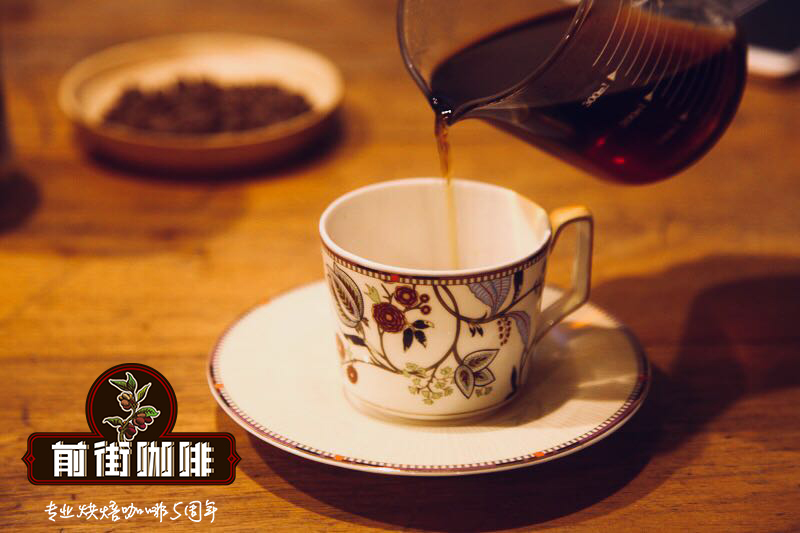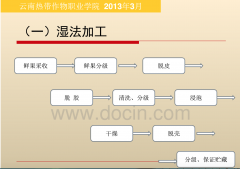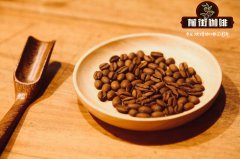Minas Djilas region, Brazil | Reunion Bourbon (also known as Lau) on the island of Reunion

Professional coffee knowledge exchange more coffee bean information please follow the coffee workshop (Wechat official account cafe_style)
Minas Djilas region, Brazil suntan method Reunion Reunion Island pointed bourbon (also known as Laurina, Leroy) flavor?
When it comes to Arabica, it is actually like a big family, and there are many different members in the family, among which the members who have the greatest influence on the coffee world are Bourbon and Typica. The reason is that coffee was once an exclusive Arab commodity, and in order to maintain its monopoly, Arabs would never allow germinating seeds to leave their place of origin; but in the 17th century, seeds were eventually smuggled into the new world (Note 5). In the new world, numerous offspring were produced, the stolen seeds were bourbon and Tibica. In the process of reproduction, many new varieties are produced due to various factors, such as natural mutation (natural mutation), intraspecific mating, artificial breeding and so on, such as Kaddura, Catuai, Pacas, Maragogype, Pacamara, SL28, SL34 and other long lists. It can be said that the vast majority of Arabica coffee we drink today are descendants of stolen bourbon and Tibica.
Bourbon is so named because it was first widely cultivated in the New World, then known as Bourbon Island, which is today's Reunion Island, while the legendary protagonist in this article, sharp bourbon, is a natural mutation of bourbon coffee on the island.
Bourbon Pointu has two other names, Laurina and Leroy, but neither is as loud as the first name. The reason why it is called sharp bourbon is that the bean shape is long and narrow and both ends are pointed, while the native species bourbon (some call it round bourbon) has a shorter bean body and a slightly oval outline. The difference in appearance between sharp bourbon and native bourbon should be immediately distinguishable. However, the biggest difference between the two lies not in appearance, but in flavor and caffeine content. If you use simple words to describe sharp bourbon, it is "good flavor, low caffeine content." 、
Sharp bourbon is a natural mutant of bourbon coffee on the island of Bourbon (present-day Reunion). It is named because the bean is long and narrow, with pointed ends at both ends, while the native species bourbon has a shorter bean body and a slightly oval outline. But the biggest difference between the two is not only the appearance, but the flavor and caffeine content. If you use concise words to describe the sharp bourbon, it is "natural very low caffeine, sparse production, delicate and charming fragrance, is one of the oldest tree species in the world."
Sharp bourbon was loved by many celebrities as early as the 18th century, such as French King Ludwig 15, French writer Balzac and so on. However, the variant bourbon was abandoned because of its weak physique, easy to infect and little blossom and fruit, so it was not welcomed by farmers and became almost extinct. It was not successfully bred until 1999-2007 thanks to the efforts of France and Japan, and it became the most expensive coffee today.
Variety: pointed Bourbon Bourbon Pointu
Producing area: Minas-Djilas area
Sea pull: 1000m
Particle size: 14, 15 mesh
Exquisite way: 100% sun treatment
Features: neutral, no miscellaneous flavor, cleaner taste
Filter cup: Hario V60
Water temperature: 90 degrees
Degree of grinding: small Fuji 3.5
Cooking methods: the ratio of water to powder is 1:15, 15g powder, the first injection of 25g water, 25 s steaming, the second injection to 120g water cut off, waiting for the powder bed water to half and then water injection, slow water injection until 225g water, extraction time about 2:00
Analysis: using three-stage brewing to clarify the flavor of the front, middle and back of the coffee. Because V60 has many ribs and the drainage speed is fast, it can prolong the extraction time when the water is cut off.
Important Notice :
前街咖啡 FrontStreet Coffee has moved to new addredd:
FrontStreet Coffee Address: 315,Donghua East Road,GuangZhou
Tel:020 38364473
- Prev

Standardized production technology of Yunnan small-grain coffee, fresh fruit picking and initial processing and washing steps
Yunnan small grain coffee fresh fruit picking and initial processing washing treatment steps Yunnan coffee fresh fruit harvest is generally divided into three batches: early ripening fruit from the end of October to mid-December, and concentrated ripening period from mid-late December to the end of January. the overall quality of this batch of coffee is the best; in February, most of the remaining fruits are diseased fruits, and the yield is very little. Coffee picking needs to pay attention to: coffee
- Next

Chiko McGaru, Karnataka, India | Meso Gold Brick Mysore local small farmers wash Robsta
Professional coffee knowledge exchange more coffee bean information please follow the coffee workshop (Wechat official account cafe_style) Chiko Magaru, Karnataka, India | Masojin brick Mysore local small farmers wash Robsta flavor? The early Arabs monopolized the cultivation and marketing of coffee, and the coffee sold to Europe was the only monopoly, and the control of coffee seeds and saplings was very strict. one
Related
- Detailed explanation of Jadeite planting Land in Panamanian Jadeite Manor introduction to the grading system of Jadeite competitive bidding, Red bid, Green bid and Rose Summer
- Story of Coffee planting in Brenka region of Costa Rica Stonehenge Manor anaerobic heavy honey treatment of flavor mouth
- What's on the barrel of Blue Mountain Coffee beans?
- Can American coffee also pull flowers? How to use hot American style to pull out a good-looking pattern?
- Can you make a cold extract with coffee beans? What is the right proportion for cold-extracted coffee formula?
- Indonesian PWN Gold Mandrine Coffee Origin Features Flavor How to Chong? Mandolin coffee is American.
- A brief introduction to the flavor characteristics of Brazilian yellow bourbon coffee beans
- What is the effect of different water quality on the flavor of cold-extracted coffee? What kind of water is best for brewing coffee?
- Why do you think of Rose Summer whenever you mention Panamanian coffee?
- Introduction to the characteristics of authentic blue mountain coffee bean producing areas? What is the CIB Coffee Authority in Jamaica?

